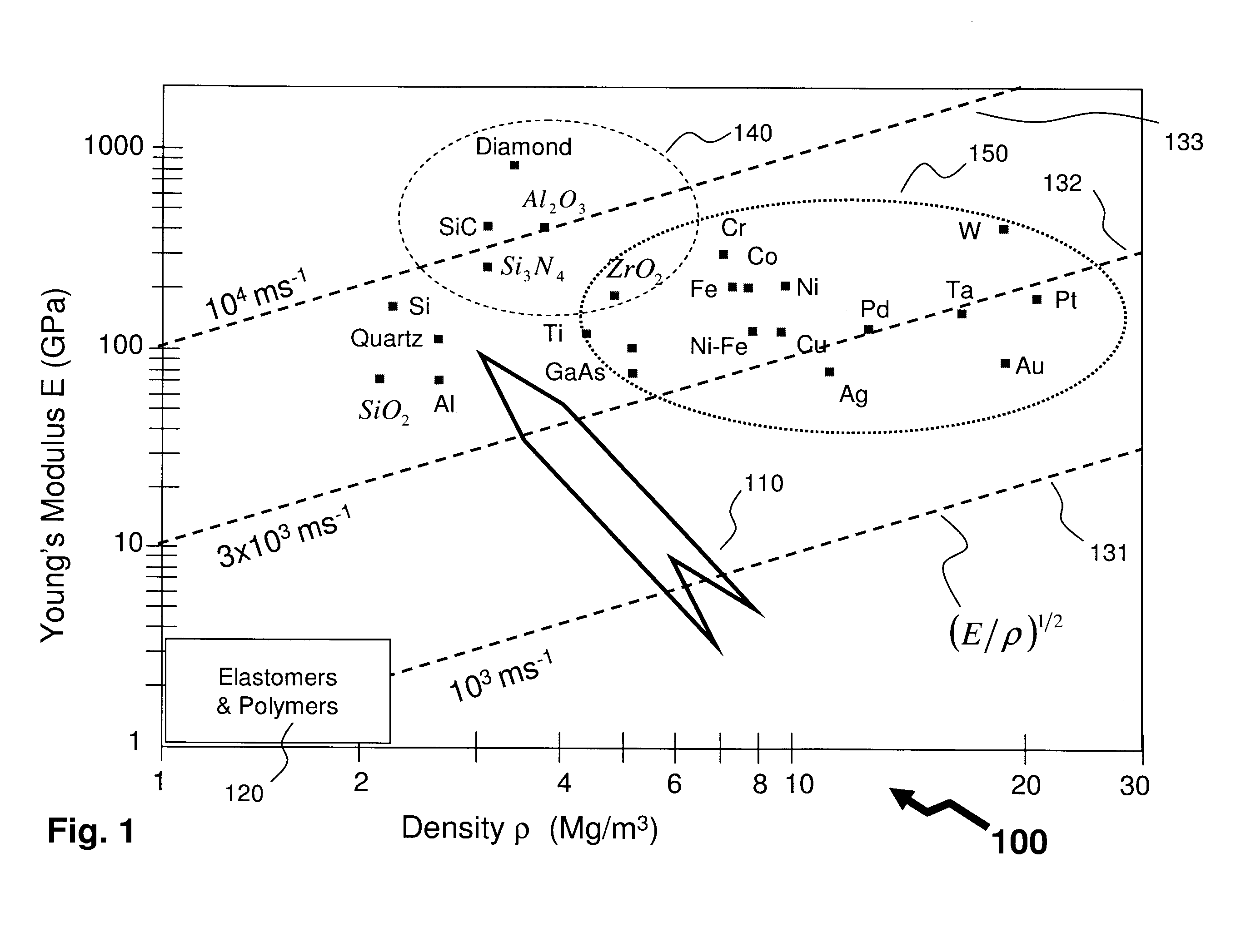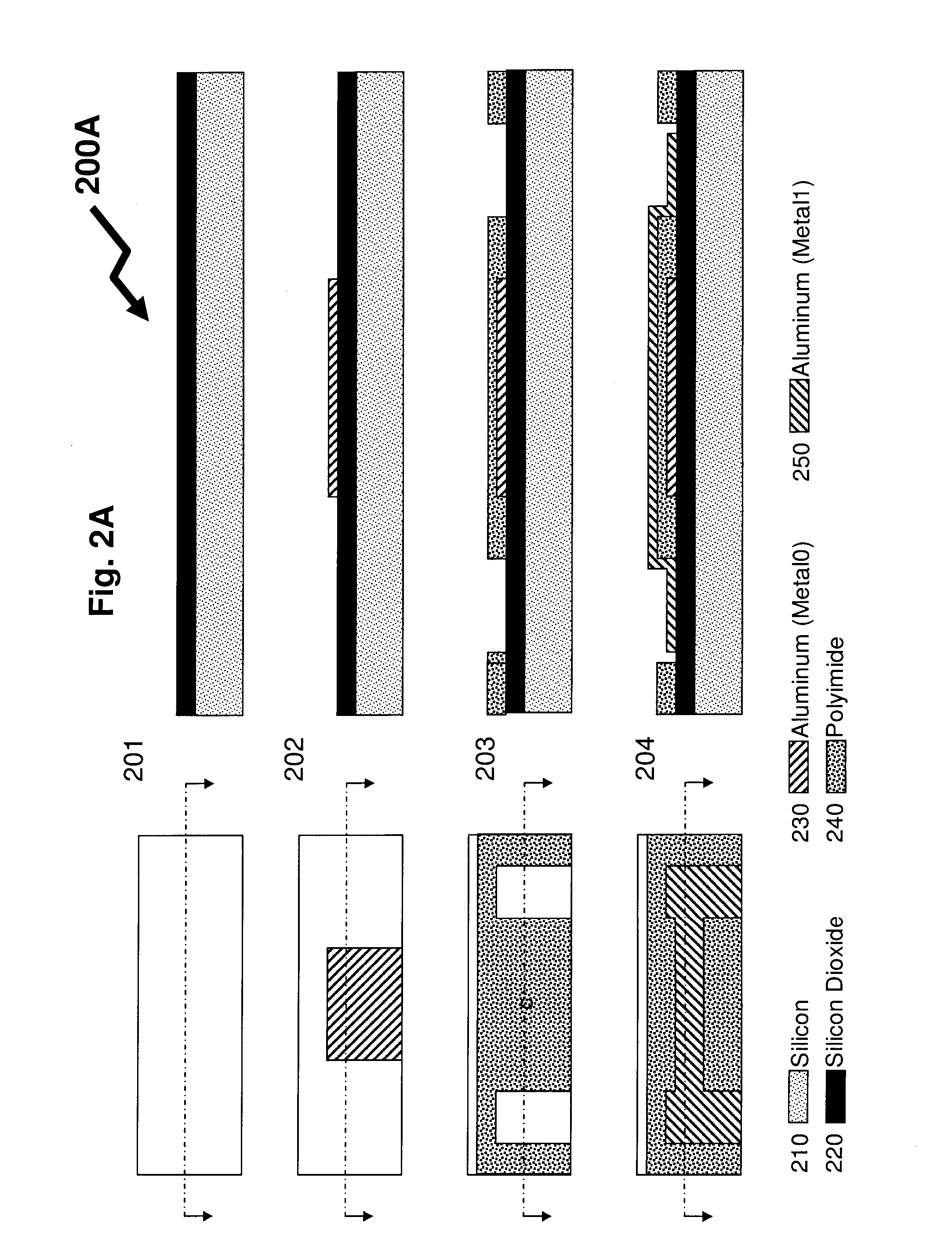Low Temperature Wafer Level Processing for MEMS Devices
a technology of microelectromechanical devices and wafers, which is applied in the field of processing of microelectromechanical devices, can solve the problems of small damping of mechanical structure vibration, difficult to gear up the fabrication process for general applications, and inability to meet the requirements of general applications
- Summary
- Abstract
- Description
- Claims
- Application Information
AI Technical Summary
Benefits of technology
Problems solved by technology
Method used
Image
Examples
first embodiment
[0095]Referring to FIG. 5 there is depicted the invention as applied to the provisioning of SiC mechanical structure 500 with ceramic reinforced wafer electrical feed-throughs forming part of a silicon wafer 510 with an integrated SiC MEMS device. Accordingly as shown a silicon wafer 510 has through-wafer via interconnects 5000 which have been metalized to form interconnect vias 570 after etching with the deposition of aluminum 403. The through-wafer via interconnects 5000 being aligned with openings 540 within the silicon dioxide 401 on the front surface of the wafer. The through-wafer via interconnects 5000 interconnect to first level metallizations 530A and 530B on the upper surface of the silicon wafer 510.
[0096]Formed upon the first level metallization 530B there is a MEMS structure 520 formed from low temperature ceramic MEMS material 404, such as silicon carbide 407. Within each through-wafer via interconnect 5000 there is deposited a reinforcing barrier 590 from a low temper...
second embodiment
[0098]Referring to FIG. 6 there is depicted the invention as applied to the provisioning of a SiC mechanical structure 600 with ceramic reinforced wafer electrical feed-throughs forming part of a silicon wafer 610 with an integrated device comprising SiC MEMS and CMOS electronics. Accordingly as shown a silicon wafer 610 has through-wafer via interconnects 6000 which have been metalized to form interconnect vias 670 after etching with the deposition of aluminum 403. The through-wafer via interconnects 6000 being aligned with openings 640A and 640B within the silicon dioxide 401 on the front surface of the wafer. The through-wafer via interconnects 6000 interconnect to first level metallizations 630A and 630B on the upper surface of the silicon wafer 610.
[0099]Formed upon the first level metallization 630B there is a MEMS structure 620 formed from low temperature ceramic MEMS material 404, such as silicon carbide 407. Within each through-wafer via interconnect 6000 there is deposited...
third embodiment
[0102]FIG. 7 depicts the invention as applied to the packaging of a MEMS device 780 manufactured onto a silicon circuit with integrated CMOS electronics wherein the resultant package is mounted to a PCB 770. Accordingly as shown the MEMS device 780, such as SiC mechanical structure 600 of FIG. 6 supra, has been hermetically packaged with a lid 710. Lid 710 having been manufactured with a getter material 720. The solder infill 790 of the through-wafer electrical vias, such as through-wafer via interconnect 6000 of FIG. 6, are electrically connected to PCB metallization 730. The PCB 770 supports through-PCB vias 750 which terminate in solder bump interconnect 760, and direct mounting of integrated circuits, represented by generic IC package 740. Said ancillary integrated circuits providing functions such as power supply generation, signal conditioning, signal processing, and digital communications. This embodiment reduces the interconnect parasitics with the PCB over traditional packa...
PUM
 Login to View More
Login to View More Abstract
Description
Claims
Application Information
 Login to View More
Login to View More - R&D
- Intellectual Property
- Life Sciences
- Materials
- Tech Scout
- Unparalleled Data Quality
- Higher Quality Content
- 60% Fewer Hallucinations
Browse by: Latest US Patents, China's latest patents, Technical Efficacy Thesaurus, Application Domain, Technology Topic, Popular Technical Reports.
© 2025 PatSnap. All rights reserved.Legal|Privacy policy|Modern Slavery Act Transparency Statement|Sitemap|About US| Contact US: help@patsnap.com



